As a result of a #MeToo-charged environment, and because of media attention on high-profile Canadian examples, Alix Herber and Sarah Graves, who are partners at Fasken Martineau DuMoulin LLP in the labour and employment group, are busier than they've ever been with sexual harassment cases.
"We can say, as labour and employment lawyers, that the number of sexual harassment claims that have arisen over the last nine months has increased considerably. We've done more investigations or advised on more investigations than we have in the previous 10 years. We've definitely seen an increase," said Herber.
"Sexual harassment in the workplace is one of those perfect storms that require your attention because we're seeing increased complaints. We're seeing significant obligations to conduct investigations, and we are also seeing significant damages. We're seeing an increase in damages when these cases go before triers of fact, be that an administrative tribunal or an arbitrator or a court. This is one of those perfect storms where attention really needs to be paid," said Graves.
Herber and Graves made these remarks while giving a presentation titled "mitigating the risk of sexual harassment in the workplace" during the 8th Fasken Toronto Symposium held at the firm's Toronto office on June 7, 2018.
In evaluating whether a workplace is at risk for a sexual harassment claim, Herber noted that a study conducted on behalf of the federal government found that the top three risk factors were workplaces with a high ratio of men in positions of power in the organization; employees being unaware of the sexual harassment reporting procedures; and employees being unaware of the grievance filing procedures.
She also spoke of a study indicating that 30 per cent of respondents said they've been subjected to sexual harassment in the workplace over the last two years. In contrast, she compared that with results of a different study, conducted by the Gandalf Group, which reported that 94 per cent of executives said sexual harassment wasn't a problem in their organizations.
"There is clearly a disconnect between what individuals are reporting about their experiences in the workplace and what some senior leaders are seeing in their perspective of the work environment," said Herber.
Graves explained that in Ontario some of the sources of obligation include the Canadian Human Rights Act, the Occupational Health and Safety Act, the Canada Labour Code, Part III, the Ontario Human Rights Code, the forthcoming Bill C-65 to amend the Canada Labour Code (which is currently before the Senate) and typical civil liability.
She said it is necessary to pay attention to all of the applicable regulations and legislation because definitions and wording varies between them. For example, the Ontario Human Rights Code includes gender-based harassment, which could include (for example) same-sex harassment of one man by another on the grounds the first is too feminine or not masculine enough.
"We've seen an increase in those types of cases as well," she said.
Graves added that a lot of misperceptions exist about the nature of sexual harassment, including the need for the harassment to be repetitive.
"We often think there has to be a large pattern of conduct or multiple incidents of harassment before it gets to the point of being actionable, but that is not the case. I think it's generally true to say when you are talking about verbal harassment, usually you see more than one comment. But it's important to remember that one incident may be enough to constitute sexual harassment, and it's not just the most egregious incident. It can be incidents that you might think are lower on the scale if you are talking least egregious to most egregious. One of those on the lower end is enough. It's not like 20 years ago when it has to be one pretty egregious physical assault before one was enough. It is now a broader range of conduct, and code violations can be pretty time consuming and costly."
Herber reminded the audience that under the Canadian Human Rights Act, "it is a discriminatory practice to harass an individual on prohibited ground with respect to the provision of goods and services and in matters related to employment."
"And we are seeing an increase in claims with respect to goods and services. We have a human rights group in our firm within our department that focuses just on the provision of goods and services and what we are seeing is in some of the provision of government services there are claims of discrimination in the way the process is done for people applying for those services. We see it in the context of retail where a number of our clients have had to respond to human rights applications where customers are claiming that in buying products or retaining services they have been subjected to harassment, and this can be from the basis of sexual comments that are made, to racial comments that are made. We are seeing an increase in that as well."
She explained that the entire employer-employee relationship is covered by Act, from the application stage to termination or dismissal. In particular, she mentioned that the early stages of the relationship where the parties don't know each other (such as during the interview phase) are particularly fraught with peril when it comes to evaluating sexual harassment claims.
While there may be differences between federal and provincial legislation, Herber emphasized that under both, "retaliation is strictly prohibited, and this is even more important in the context of sexual harassment." She said these types of complaints and investigations can leak and become fodder for office gossip, which makes it harder to reintegrate people into the workplace.
"We often deal with claims where someone will come back to the workplace. They just want to get going. They don't want to have this haunting them. It has been resolved. They want to move forward. Then somebody will make a comment like, 'we'd better not sit next to Sarah or she'll bring a sexual harassment complaint.' These types of comments not only disempower people to bring forward complaints, they are also in the context of a reprisal or retaliation situation, and can, themselves, create a further complaint."
Graves expanded on that, giving an example where managers might feel the need to relive some tension on their teams due to a sexual harassment complaint, "so they decide to joke about it in a well-meaning way, thinking they are somehow resolving this tension in the workplace, but what they are doing is walking straight into a retaliation compliant," she said adding that management training is vital to prevent situations like this from occurring, or to avoid situations where the person who made the complaint is isolated from work events, trips or socializing.
Herber said it is very rare for complaints to be completely fabricated and that there is usually some basis for the complainant to come forward, even if that is simply a miscommunication or differences in perspective in interpreting comments, "but an outright claim that has no merit is rare in our experience."
Graves and Herber pointed out that Bill 132, or the Occupational Health and Safety Act, has a couple of requirements that businesses should understand, including mandating a written sexual harassment policy and program and an expanded "duty to protect" obligation, which means that as long as an employer is aware of a sexual harassment situation - even if the employee who is allegedly being harassed doesn't wish to proceed with a formal complaint - the organization is obligated to take action to investigate the situation. The Act also broadens the powers of outside inspectors who have the power to come into a business and determine if a sexual harassment complaint has been handled properly.
On the civil liability side, they said they've seen increases in people, especially self-represented litigants - filing human rights claims at tribunals and an overall increase in settlement rewards.
"Dealing with plaintiff counsel in this area has resulted in higher settlements," said Herber.
"We're seeing what used to be settled for $10,000 or $15,000 now being settled for well above $30,000 and in some cases closer to $50,000, depending on the egregiousness of the conduct that's alleged."
< Back to In-House Counsel Resource Page
The Lawyer's Daily
This article was originally published by The Lawyer's Daily -- providing Canadian legal news, analysis and current awareness for lawyers and legal professionals who need a real-time view on the shifting legal landscape.


